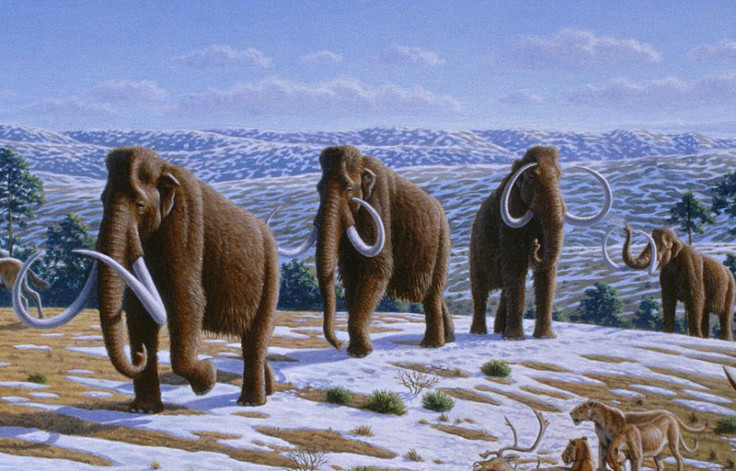Woolly Mammoth Remains Found; Russian Boy Stumbled Upon Tusk Appearing Above Frozen Mud

An 11-year-old boy stumbled across the remains of a teenage woolly mammoth that is believed to have been killed by an Ice Age-era man tens of thousands of years ago 2,200 miles northeast of what is now Moscow.
Mammoth remains have been found before in the permafrost of Siberia, but the Daily Mail reported that this set of remains -- named Zhenya in Russian (Jenya in English), after the boy who found it -- is the best-preserved since a mammoth that was found in 1901.
Archaeologists said the boy found the woolly mammoth’s remains because one of its tusks was sticking out above the frozen mud. Once the site was excavated, Zhenya’s tusks, mouth, and rib cage were all visible.
The mammoth was 16 years old when it was killed, an event a Russian scientist speculated may have happened on a summer day at the hands of early homo sapiens, according to the Associated Press. The mammoth was about 6 feet 6 inches tall and weighed roughly 1,100 pounds -- a small size, considering some mammoths grew to be 13 feet tall and weighed as much as 10 tons.
The Daily Mail reported the animal died about 30,000 years ago. The last of the woolly mammoth population is thought to have died out 10,000 years ago, although scientists suspect smaller populations survived longer in Alaska and on the Siberian coast.
Alexei Tikhonov, a professor at the Zoology Institute of St. Petersburg told AP Zhenya “was pretty small for his age” and that splits on its tusk could show evidence of a “possible human touch.” Tikhonov also made it clear that the state of its DNA, damaged by low temperatures, made it impossible for the mammoth to be cloned, although remains from another Ice Age-era mammoth could make it possible for the public to see an assembled skeleton of the beast.
Researchers also determined that the humps on Zhenya's back are from fat, similar to how camels store water in the their humps. It was previously suspected that the giant humps on mammoth’s back were at least in part structured by bone, as noted by RT.com.
“We can see that this animal was very well adapted to the northern environment, accumulating massive amounts of fat,” Tikhonov told Itar-Tass. “This animal likely died during the summer period as we can’t see much of its undercoat, but it had already accumulated a sufficient amount of fat.”
Paleontologists spent a week carefully excavating the site, using steam generators to free the carcass from the frozen earth.
© Copyright IBTimes 2024. All rights reserved.











